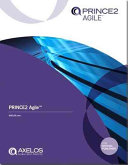Karsten W. reviewed PRINCE2 Agile by AXELOS
Review of 'PRINCE2 Agile' on 'Goodreads'
4 stars
In March 2021 I passed the exam to become a "PRINCE2 Agile Practioner".
The training and the preparation for the exam were very helpful for me to reflect myself as a project manager in a consulting company.
In addition to the training, I had two textbooks at my disposal: the general PRINCE2 textbook ("Managing Successful Projects with PRINCE2") and "PRINCE2 Agile", which I will go into in more detail in a moment.
First, a brief introduction to PRINCE2. PRINCE2 is (as I understand it) a partially abstract system for describing project structures. I have the idea that some smart people have analysed a large portfolio of projects and have extracted and named recurring structures (principles, themes, processes) from it. For example, I found it interesting that it is not a good idea to bundle certain roles in the project in one person, e.g. project management and project assurance.
While PRINCE2 …
In March 2021 I passed the exam to become a "PRINCE2 Agile Practioner".
The training and the preparation for the exam were very helpful for me to reflect myself as a project manager in a consulting company.
In addition to the training, I had two textbooks at my disposal: the general PRINCE2 textbook ("Managing Successful Projects with PRINCE2") and "PRINCE2 Agile", which I will go into in more detail in a moment.
First, a brief introduction to PRINCE2. PRINCE2 is (as I understand it) a partially abstract system for describing project structures. I have the idea that some smart people have analysed a large portfolio of projects and have extracted and named recurring structures (principles, themes, processes) from it. For example, I found it interesting that it is not a good idea to bundle certain roles in the project in one person, e.g. project management and project assurance.
While PRINCE2 is quite abstract and formal, PRINCE2 Agile is an adaptation of PRINCE2 that works well for complex projects. Complex projects are projects where it is not clear in detail at the beginning how the project will proceed and are in contrast to complicated or simple projects.
Here, the author brings order to the different agile frameworks. On the one hand, there are agile practices (e.g. Scrum) and tools (Kanban). I use Scrum practices in particular more and more. The "time-boxing" of the sprints reduces stress because it protects against subsequent call-ins. Changes just have to wait until the next sprint. Stand-ups are helpful in a multi-project environment to remind people about the project.
But the word "agile" is not just about a working style. "Agile" needs framework conditions. The client has to be convinced of the iterative way of working and a flexible handling of quality and scope. And the team also needs to get to know agile practices and be willing to try them out. The book highlights this and gives valuable advice on how to achieve each.
For example, the "Agilometer" is presented, where agility is measured in six dimensions. Because according to the author -- whose name is Keith Richards, by the way -- "agile" is not to be understood categorically (yes/no), but metrically (more or less). In my opinion, the Agilometer is comparable to the newer Agile Fluency Model.
Although I found the book very helpful to learn about agile project management. However, I also needed the impetus provided by the exam, the incorrectly answered questions and the follow-up research. The book is not suitable to browse through in a quiet minute. It is heavily structured, with lots of lists and headings. It is not visually attractive. Therefore, it only gets 4 out of 5 points.
The next step in this topic for me is to apply the methodology to projects of all kinds, to take the time to apply the PRINCE2 terminology to what I am doing.

